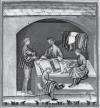Abstract
The Silk Road is an extraordinary network of trade, cultural and religious routes of about 15000 km of length. Formore 2000 years it has represented the only link between East and West peoples. From the ancient city of Xi’an, thesilk production centre, the Silk Road is arrived to the Mediterranean Sea through Russia, Kazakhstan, Tajikistan,Kyrgystan, Uzbekistan, Turkmenistan, Afghanistan, Iran, Iraq, Armenia, Syria, Turkey, Greece and Egypt. The mainobjective of this contribution is the analysis of the cultural value of this trade route which has favoured the exchangeof many products providing relevant social, economic and cultural contacts. The Silk Road, for centuries, has joinedEast and West peoples. A very topical theme today. TApuntes is registered under a Creative Commons Attribution 4.0 International Public License. Thus, this work may be reproduced, distributed, and publicly shared in digital format, as long as the names of the authors and Pontificia Universidad Javeriana are acknowledged. Others are allowed to quote, adapt, transform, auto-archive, republish, and create based on this material, for any purpose (even commercial ones), provided the authorship is duly acknowledged, a link to the original work is provided, and it is specified if changes have been made. Pontificia Universidad Javeriana does not hold the rights of published works and the authors are solely responsible for the contents of their works; they keep the moral, intellectual, privacy, and publicity rights.
Approving the intervention of the work (review, copy-editing, translation, layout) and the following outreach, are granted through an use license and not through an assignment of rights. This means the journal and Pontificia Universidad Javeriana cannot be held responsible for any ethical malpractice by the authors. As a consequence of the protection granted by the use license, the journal is not required to publish recantations or modify information already published, unless the errata stems from the editorial management process. Publishing contents in this journal does not generate royalties for contributors.


